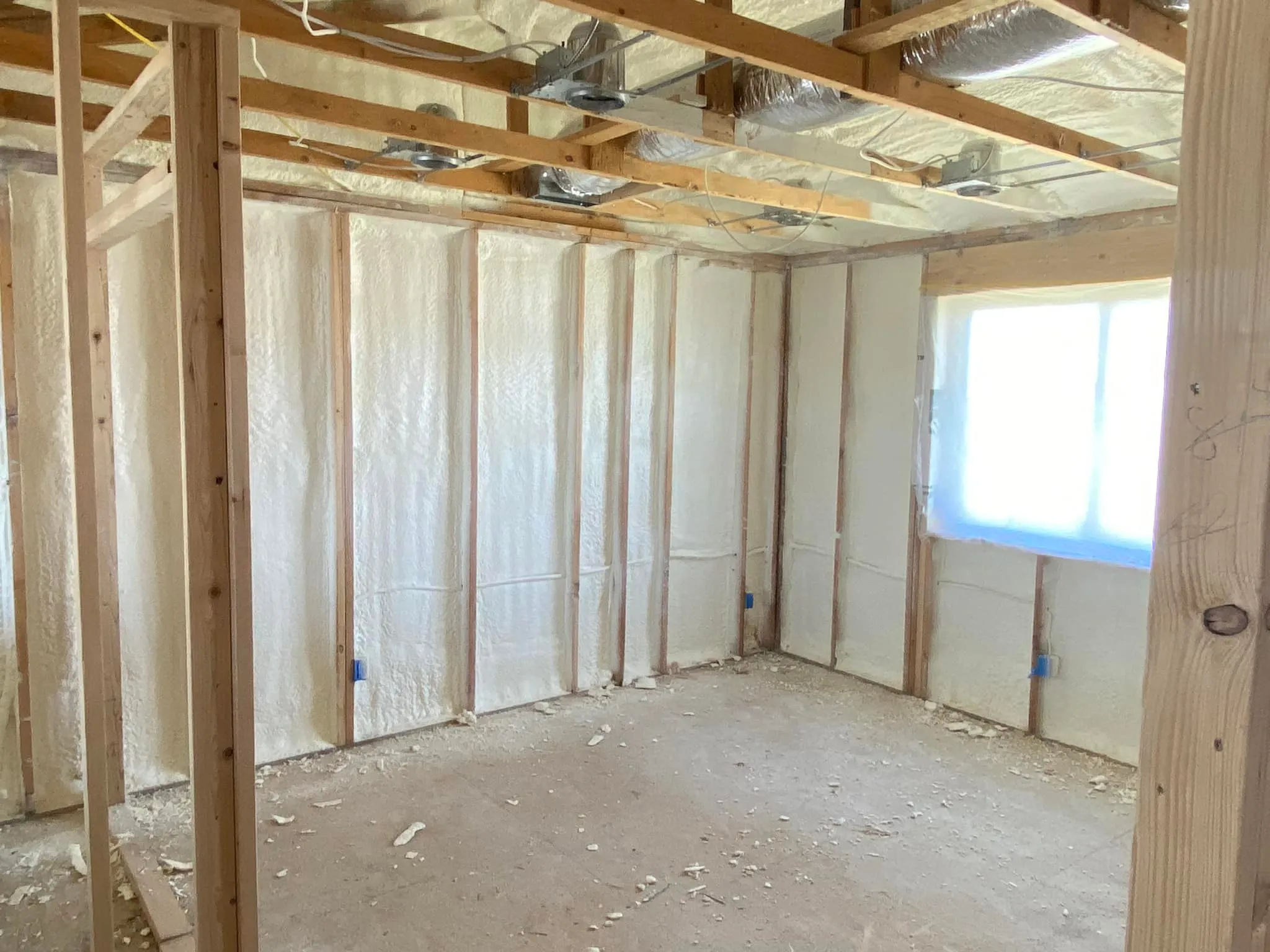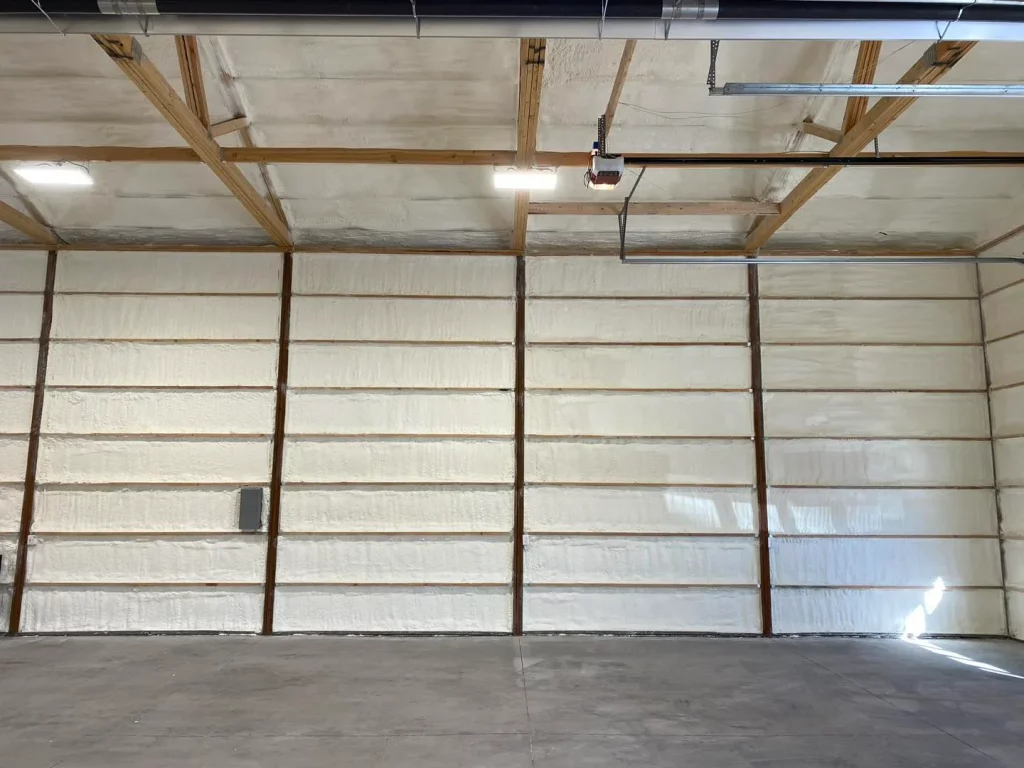
Uneven temperatures throughout a home, such as a stuffy upstairs in the summer or a chilly basement in the winter, are almost always caused by uncontrolled air leakage. While traditional insulation like fiberglass or cellulose slows heat transfer, it doesn’t stop air from moving through gaps and cracks in your home’s structure. Spray foam insulation directly solves this problem by creating a continuous, airtight barrier. It expands to fill every opening, effectively stopping drafts and preventing conditioned air from escaping, which is the key to maintaining a consistent and comfortable temperature in every room.
This article will explain the science behind why homes develop hot and cold spots and how spray foam’s unique properties offer a permanent solution. The information comes from years of hands-on experience in building science and thermal performance, providing a clear look at how this material works. Recent industry-level energy efficiency updates also reinforce the growing shift toward airtight insulation methods as homeowners seek more consistent indoor comfort.
Understanding these principles is the first step toward creating a more comfortable and energy-efficient living space.
The feeling of a drafty room or a floor that’s always cold isn’t just about a lack of insulation; it’s about air infiltration. Air finds its way into and out of your house through countless tiny openings in the building envelope. This process is often driven by a phenomenon known as the “stack effect.”
During the winter, warm air rises and escapes through openings in the attic and upper levels. To replace that escaping air, cold outside air is pulled in through cracks in the foundation, rim joists, and lower-level windows. According to a guide from the U.S. Department of Energy, this continuous cycle of air replacement is a primary source of energy loss and temperature imbalance. In the summer, the effect reverses, with hot attic air pushing down into the living space. Common air leakage points include:
Traditional insulation materials don’t form an air barrier, so they can’t stop this movement. Air simply passes through and around them, carrying your heating and cooling energy with it.

Spray polyurethane foam (SPF) is different from other insulation because it performs two jobs at once: it insulates, and it air seals. Applied as a liquid, it expands on contact to create a solid, seamless layer that conforms to any shape. This monolithic barrier adheres directly to the substrate, leaving no gaps for air to penetrate.
There are two main types of spray foam used in residential applications: open-cell and closed-cell. Each has distinct properties suited for different areas of a home.
| Feature | Open-Cell Spray Foam | Closed-Cell Spray Foam |
|---|---|---|
| Density | Low-density (approx. 0.5 lb/ft³) | High-density (approx. 2.0 lb/ft³) |
| Structure | Cells are not fully encapsulated | Cells are fully encapsulated and packed tight |
| R-Value | ~R-3.7 per inch | ~R-6.5 per inch |
| Air Barrier | Yes, effective air barrier | Yes, effective air barrier |
| Vapor Permeability | Permeable (allows water vapor to pass) | Impermeable (blocks water vapor) |
| Best For | Walls, attics (roof decks), sound attenuation | Basements, crawl spaces, continuous exterior |
Choosing the right type depends on the specific goals of the project, climate, and location within the home. For example, closed-cell foam’s ability to block moisture makes it an excellent choice for below-grade applications like basements.
Bonus Tip: When a home is made exceptionally airtight with spray foam, it’s important to have a mechanical ventilation strategy. An Energy Recovery Ventilator (ERV) or Heat Recovery Ventilator (HRV) can be installed to exchange stale indoor air with fresh outdoor air while retaining most of the energy used to heat or cool it.
When your house is leaky, your heating and cooling system has to work constantly to keep up with the fluctuating temperatures and constant infiltration of outside air. This leads to higher energy bills, excessive wear on the equipment, and inconsistent comfort.
By air sealing with spray foam, the workload on your HVAC system is dramatically reduced. The unit no longer needs to fight a constant battle against air leakage. As a result, it runs in shorter, less frequent cycles to maintain the thermostat setting. A report from the Environmental Protection Agency highlights that air sealing and insulating can save homeowners an average of 15% on heating and cooling costs. For some homes, the savings can be even more substantial. This efficiency not only lowers utility bills but also extends the lifespan of your expensive HVAC equipment.
According to our official press release, these results reflect our company’s long-term commitment to precision air sealing and sustainable building practices.
Applying spray foam is a significant upgrade, and there are several factors to weigh before moving forward.
Ultimately, spray foam insulation provides consistent comfort by addressing the root cause of temperature variations: air leakage. By creating a complete air barrier, it stops drafts, reduces the strain on your HVAC system, and keeps conditioned air where it belongs. The best path forward is to carefully assess your home’s specific issues, whether it’s cold floors, drafty rooms, or high energy bills, and determine if this solution aligns with your long-term goals for comfort and efficiency.
If you’re considering an insulation upgrade, getting a professional evaluation is the next step. An expert can help identify critical air leakage areas and determine the right type of insulation for your specific home and climate. For a detailed consultation, contact High Country Solutions at (307) 248-9063 or send an email to [email protected] to discuss your project.
During application and for a short curing period afterward (typically 24 hours), there is a distinct odor. Professionals use ventilation systems to manage this. Once fully cured, spray foam is inert and odorless.
For an average-sized home, retrofitting an attic or crawl space can often be completed in one to two days. A full home application in new construction may take slightly longer.
Yes, it can. In most retrofit applications, the old insulation (like dirty fiberglass batts or settled cellulose) is removed first. This ensures the spray foam can adhere directly to the substrate and create a complete air seal.
On a per-inch basis, spray foam offers a higher R-value. Closed-cell foam provides around R-6.5 per inch, and open-cell foam provides about R-3.7 per inch. In contrast, standard fiberglass batts offer roughly R-3.1 to R-3.4 per inch. More importantly, this R-value isn’t degraded by air movement, which happens with fiberglass.
Open-cell spray foam is particularly effective at reducing airborne sound transmission. Its soft, dense texture absorbs sound waves, making it a great option for media rooms, offices, or walls between bedrooms.
When installed correctly, spray foam does not sag, settle, or degrade over time. It is a rigid, inert material that is expected to last for the life of the building. It maintains its insulating and air-sealing properties indefinitely.